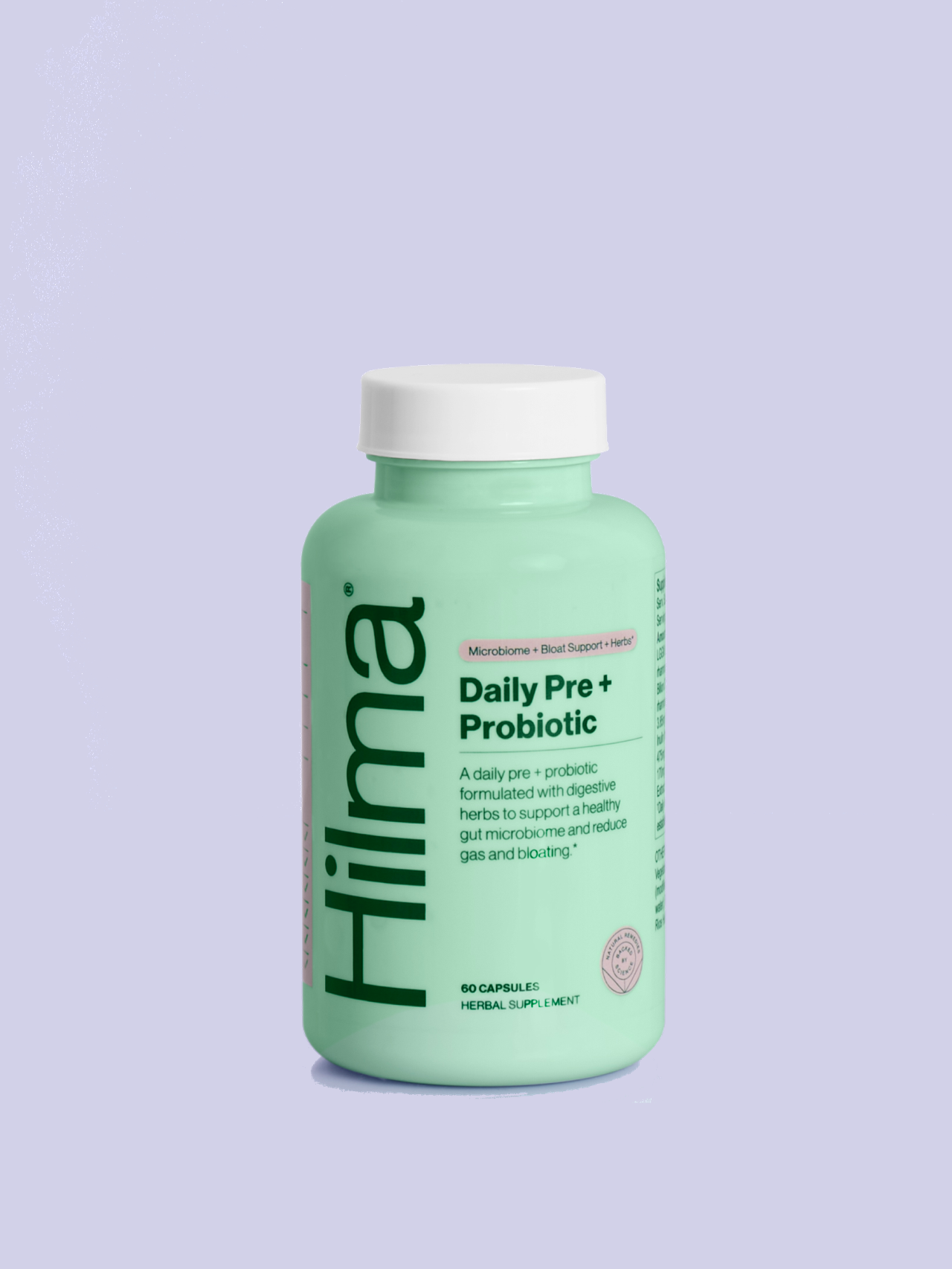
If you’ve ever wondered why your skin’s breaking out, your mood’s tanking, or you can’t poop for days (and then suddenly can’t stop)—this one’s for you. As a functional health coach who shadows a clinical dieticial, the gastrointestinal system is often the very first place we investigate when a client presents with persistent or unexplained symptoms. Why? Because it’s rarely just a gut issue. It’s a whole-body conversation with downstream effects on everything from hormones to mental health.
Let’s walk through some of the most common clinical gut imbalances I encounter in practice—and how they’re often connected to broader systemic concerns like fatigue, skin flare-ups, menstrual irregularities, and inflammatory symptoms.
1. Leaky Gut (Intestinal Permeability)
Leaky gut is one of the most foundational (and overlooked) patterns we see. When the intestinal lining becomes compromised (due to stress, alcohol, infections, food triggers, or certain medications), tight junctions loosen, and unwanted particles like bacteria, toxins, and undigested food slip into the bloodstream. The immune system flags these as threats, which triggers widespread inflammation.
Why it matters:
-
Nutrient absorption is impacted—especially iron, B12, zinc, and fat-soluble vitamins (A, D, E, K).
-
Clients often show up with unexplained fatigue, hair loss, brittle nails, food intolerances, or even new allergies.
-
Skin issues (acne, rashes, hives) and histamine overload often trace back here.
If someone has “mystery symptoms,” multiple sensitivities, or vague inflammation that won’t resolve—even after cutting out gluten, dairy, sugar—I almost always suspect intestinal permeability.
2. Chronic Constipation
This is an epidemic. And I’m not exaggerating.
Many clients don’t realize they’re constipated because it’s been their “normal” for so long. One bowel movement every 3 days? That’s not normal—it’s a red flag. If your gut isn’t eliminating daily, you’re reabsorbing toxins, hormones (like estrogen), and metabolic waste that should’ve been cleared.
What chronic constipation can lead to:
-
Acne and skin issues due to toxin recirculation
-
Estrogen dominance symptoms (PMS, fibroids, tender breasts)
-
Bloating, irritability, and sluggish metabolism
-
Bacterial overgrowth due to stagnation
We often talk about the power of detox—but the most basic form of detox is a daily bowel movement. No supplement can replace that.
3. Bloating After Eating Anything
This is one of the most common (and frustrating) client complaints.
If someone says they’re bloated after everything—salads, smoothies, even water—it usually points to a foundational issue with digestion, rather than just a food sensitivity. This could mean low stomach acid, pancreatic insufficiency, sluggish bile flow, or microbial imbalances like SIBO or candida.
Questions I ask:
-
Is the bloating higher up (under the ribs) or lower?
-
Does it happen right after meals or 1–2 hours later?
-
Is there pain, gas, or bowel change with it?
This gives insight into whether we’re looking at a stomach acid issue, small intestine problem, or colonic dysbiosis.
4. SIBO (Small Intestinal Bacterial Overgrowth)
SIBO happens when bacteria that should live in the large intestine migrate into the small intestine—where they ferment food and produce gas. This can lead to extreme bloating, abdominal pain, and unpredictable bowels.
Types of SIBO:
-
Hydrogen-dominant: loose stools, urgency, worse with prebiotic fibers
-
Methane-dominant (IMO): constipation, slow transit, bloating
-
Hydrogen sulfide: foul-smelling gas, skin issues, sometimes neurological symptoms
This is a major reason I don’t recommend randomly taking probiotics. In someone with SIBO, they can make things worse. We use GI-MAP and breath testing to target treatment appropriately.
5. Candida & Fungal Overgrowth
Candida albicans is a yeast that lives in the gut—but overgrowths are incredibly common, especially after antibiotics, hormonal birth control, high-sugar diets, or immunosuppression.
Symptoms I often see:
-
Sugar cravings
-
White coating on the tongue
-
Acne, rashes, especially in oily zones
-
Brain fog, anxiety, or mood swings
It also contributes to leaky gut and worsens histamine intolerance. I often see candida coexisting with streptococcus, staph, or parasites—especially in skin-related cases.
6. Low Stomach Acid (Hypochlorhydria)
Low stomach acid is a huge root cause that often masquerades as the opposite. People think they have “acid reflux” and start popping antacids, but in reality, they may not be producing enough acid to digest their food—especially protein.
Clues it’s low acid, not high:
-
Burping, bloating shortly after meals
-
Undigested food in stool
-
Anemia or B12 deficiency
-
Upper GI infections (like H. pylori)
We often use the baking soda test as a quick at-home screen: Mix 1/4 tsp baking soda in water and drink on an empty stomach. If you don’t burp within 3–5 minutes, there’s a good chance your acid levels are low.
Low acid sets the stage for infections like H. pylori, parasites, candida, and SIBO. It’s the gatekeeper.
7. H. Pylori Infections
Helicobacter pylori is a spiral-shaped bacteria that can colonize the stomach and damage the mucosal lining. It’s incredibly common—and often asymptomatic—but in some people, it drives ulcers, reflux, low stomach acid, and systemic inflammation.
Associated symptoms include:
-
Nausea, burping, fullness after meals
-
Halitosis (bad breath)
-
Histamine issues
-
Anxiety and skin flares
Eradication requires a careful balance of antimicrobials and gut lining support. It also often coexists with candida and parasites.
8. Parasites
You do not need to travel to a developing country to have parasites. I’ve seen them show up in people who haven’t left the U.S. in years. They’re sneaky, and most standard stool tests miss them. The GI-MAP is one of the best tools for detection.
Common culprits:
-
Blastocystis hominis: linked to IBS, hives, acne
-
Dientamoeba fragilis: bloating, mood swings
-
Giardia: fatigue, diarrhea, sulfur burps
Parasites often flare around the full moon, when melatonin (an anti-parasitic hormone) drops. Symptoms may include intense bloating, weird food cravings, itchiness, sleep disturbances, and skin issues.
9. Skin Flares from Gut Overgrowths
There’s a huge connection between microbial imbalances and skin health. I regularly see acne, perioral dermatitis, back acne, and seborrheic dermatitis linked to gut pathogens.
Skin offenders I often see on labs:
-
Candida: cystic acne, seb derm, “fungal acne”
-
Streptococcus: triggers perioral dermatitis, especially around the mouth/chin
-
Staphylococcus: worsens acne and folliculitis
-
Parasites: chronic inflammation, hives, eczema flares
No topical routine will fix chronic skin issues without addressing the internal terrain.
10. The Gut-Brain Connection
The gut makes over 90% of the body’s serotonin and around 50% of its dopamine—two neurotransmitters critical for mood, motivation, and focus. When the gut is inflamed, infected, or leaking, it impacts mental health.
Symptoms of gut-brain dysregulation:
-
Anxiety or depression without clear cause
-
Racing thoughts, irritability, OCD tendencies
-
Fatigue despite good sleep
-
Panic before or after meals (common with SIBO or candida)
Supporting the gut can stabilize mood and improve resilience. In many cases, we see better results combining digestive protocols with nervous system support (like breathwork, vagus nerve stimulation, and slow mornings).
11. Metabolic Health, Insulin Resistance & the Gut
Metabolic dysfunction is one of the most overlooked manifestations of gut imbalance. When the gut lining is inflamed, leaky, or missing key bacterial species, it can impair insulin signaling, blood sugar regulation, and fat metabolism.
Clients with blood sugar crashes, constant carb cravings, stubborn weight gain (especially around the belly), or PCOS-like symptoms often have some form of gut dysbiosis driving the dysfunction.
One major player here is Akkermansia muciniphila, a beneficial gut bacterium that helps maintain the mucosal barrier and supports metabolic homeostasis. Low levels are associated with:
-
Insulin resistance
-
Blood sugar instability
-
Increased inflammation
-
Weight loss resistance
On stool testing, we often see that those struggling with metabolic health have severely depleted Akkermansia. In these cases, we focus on rebuilding the microbiome through polyphenol-rich foods (like pomegranate, cranberry, and green tea), targeted prebiotics, and sometimes postbiotics to help restore balance.
Your metabolism isn’t just about willpower or exercise—it’s deeply rooted in the gut.
12. The Power of the GI-MAP Test
Most people don’t need 20 different supplements—they need the right ones. Stool testing like the GI-MAP allows us to stop guessing and get specific. It shows:
-
Pathogenic bacteria, parasites, candida, and viruses
-
Inflammatory markers (like calprotectin and secretory IgA)
-
Pancreatic enzyme output and gut lining integrity
-
Opportunistic bacteria like H. pylori, strep, staph
We don’t guess—we test. Then we support the gut lining, remove pathogens, and rebuild the microbiome based on the person in front of us.
Gut health isn’t just about probiotics and cutting gluten. It’s about how safe your body feels. You can’t heal in a rush. You can’t release if your nervous system is in threat mode.
One of the most underrated tools in gut healing is a slow, consistent morning routine that regulates your nervous system. Gentle walks, journaling, sunlight, warm drinks. Your body needs to know it’s safe in order to release.
Whether you’re dealing with constipation, breakouts, mood swings, or "normal" bloating—your symptoms are data. And they’re always trying to tell you something.
Let’s start listening.



